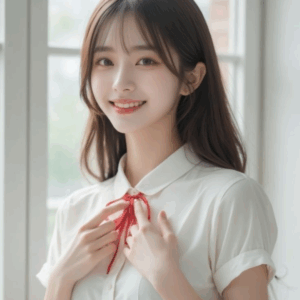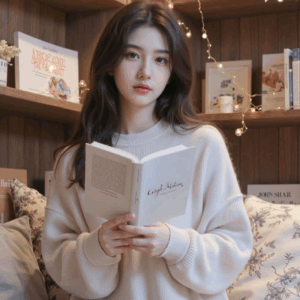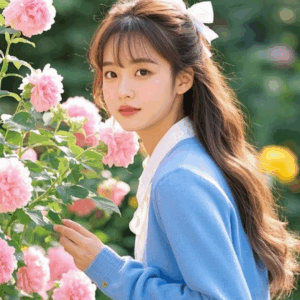Exploring The New Standard of Beauty: AI Women from Around the Globe, this introduction delves into a fascinating narrative that captivates readers from the start.Providing a comprehensive overview of the evolution of beauty standards, diversity in beauty representations, technological advancements in AI beauty, and global perspectives on AI women.
The Evolution of Beauty Standards
Beauty standards have evolved significantly throughout history, shaped by cultural beliefs, societal norms, and individual preferences. Traditional beauty ideals varied widely across different cultures, reflecting each society's unique values and ideals of attractiveness.
Historical Evolution of Beauty Standards
- Ancient Egypt: In ancient Egypt, beauty was associated with features like almond-shaped eyes, smooth skin, and symmetrical facial features. Women would use cosmetics like kohl and henna to enhance their appearance.
- Renaissance Europe: During the Renaissance period in Europe, full figures and pale skin were considered beautiful, symbolizing wealth and prosperity. Artists like Botticelli depicted women with voluptuous bodies and fair complexions.
- Imperial China: In Imperial China, small feet were seen as a symbol of beauty and status among women. Foot binding was practiced to achieve the desired tiny feet, despite the physical pain and deformities it caused.
Modern Perceptions of Beauty
- Today, modern beauty standards have shifted towards a more diverse and inclusive representation of beauty, embracing different body types, skin tones, and features.
- The rise of social media and technology has played a significant role in shaping contemporary beauty ideals, with influencers and celebrities setting trends and promoting certain beauty standards.
Globalization and Homogenization of Beauty Ideals
- Globalization has led to the spread of Western beauty ideals across the world, influencing perceptions of beauty in diverse cultures and societies.
- As a result, there is a growing concern about the homogenization of beauty standards, with many individuals feeling pressured to conform to a narrow definition of beauty perpetuated by the media and popular culture.
Diversity in Beauty Representations

In the realm of beauty standards, diversity plays a crucial role in reshaping societal norms and perceptions. AI technology has been instrumental in revolutionizing beauty representations by showcasing a wide range of diverse features and characteristics from women around the globe.AI projects have emerged that celebrate beauty in various forms, highlighting the unique features and aesthetics of individuals from different regions.For example, there are platforms that use AI to generate digital models that represent a spectrum of skin tones, facial features, body shapes, and cultural backgrounds. These projects aim to challenge traditional beauty ideals and promote inclusivity in the beauty industry.The importance of inclusivity in beauty representation cannot be overstated.By embracing diversity and showcasing beauty in all its forms, AI technology has the power to redefine beauty standards and foster a more inclusive and accepting society. When individuals see themselves represented in media and advertising, it can have a profound impact on their self-esteem and confidence.Culturally, the significance of beauty diversity in the context of AI-generated women lies in its ability to break free from the limitations imposed by traditional beauty standards.AI allows for the celebration of diverse beauty ideals from different cultures and backgrounds, promoting a more nuanced and inclusive understanding of beauty. This not only enriches the beauty landscape but also challenges stereotypes and biases that may have been perpetuated in the past.
Technological Advancements in AI Beauty
AI algorithms have revolutionized the beauty industry by enabling the creation of virtual models that redefine traditional beauty standards. These AI-generated women are meticulously designed to embody a diverse range of features and characteristics that challenge conventional notions of beauty
.
Designing AI-Generated Women
Using AI technology, designers input a vast amount of data on facial features, body proportions, and skin tones to create virtual models that represent a wide spectrum of beauty. Advanced algorithms analyze this data to generate hyper-realistic images of women that reflect a global perspective on beauty.
Ethical Considerations
The use of AI in defining beauty standards raises ethical concerns regarding the perpetuation of unrealistic beauty ideals and the potential reinforcement of harmful stereotypes. It is crucial to consider the impact of these AI-generated beauty standards on society's perception of beauty and self-worth.
Future Implications in Fashion and Advertising
As AI-generated beauty becomes more prevalent, industries like fashion and advertising may increasingly rely on virtual models to showcase their products. This shift could lead to greater diversity and inclusivity in beauty representations, but also raises questions about the authenticity and transparency of these digitally created images.
Global Perspectives on AI Women

AI women from different regions showcase unique features inspired by local beauty standards, reflecting the diversity of cultures worldwide. Through AI technology, these representations bridge cultural divides and promote a more inclusive definition of beauty that celebrates various ethnicities and backgrounds.
Cultural Influence on AI Beauty Standards
AI beauty standards vary across different countries and continents, influenced by cultural norms and ideals of beauty. For example, AI women from East Asia may emphasize porcelain skin and delicate features, while AI women from Africa may highlight rich skin tones and bold facial expressions.
Societal Impact of AI-generated Women
- AI-generated women challenge traditional beauty standards and stereotypes, reshaping perceptions of beauty and self-image.
- By offering diverse representations of beauty, AI women contribute to a more inclusive and accepting society where beauty is not limited to a specific mold.
- However, concerns arise regarding the perpetuation of unrealistic beauty standards through AI manipulation and editing.
Comparison of AI Beauty Standards
| Region |
Beauty Standards |
| North America |
Emphasis on symmetrical features, youthful appearance, and clear skin. |
| South America |
Celebration of curves, tanned skin, and expressive features. |
| Europe |
Preference for natural beauty, defined bone structure, and understated elegance. |
| Asia |
Diverse range of beauty standards, including fair skin, petite stature, and harmonious facial proportions. |
| Africa |
Appreciation for rich skin tones, bold features, and cultural adornments. |
Final Review

In conclusion, The New Standard of Beauty: AI Women from Around the Globe offers a fresh perspective on beauty ideals, diversity, and technological advancements, shaping the future of beauty standards worldwide.
Helpful Answers
What is the significance of AI women in reshaping beauty standards?AI women redefine beauty standards by promoting diversity and inclusivity, challenging traditional ideals.
How does AI technology impact the fashion and advertising industries?AI advancements in beauty have the potential to revolutionize industries by creating virtual models and enhancing marketing strategies.
Are there ethical concerns related to using AI in defining beauty standards?Ethical considerations arise from the potential impact of AI-generated beauty on societal perceptions and self-image.
 In the realm of beauty standards, diversity plays a crucial role in reshaping societal norms and perceptions. AI technology has been instrumental in revolutionizing beauty representations by showcasing a wide range of diverse features and characteristics from women around the globe.AI projects have emerged that celebrate beauty in various forms, highlighting the unique features and aesthetics of individuals from different regions.For example, there are platforms that use AI to generate digital models that represent a spectrum of skin tones, facial features, body shapes, and cultural backgrounds. These projects aim to challenge traditional beauty ideals and promote inclusivity in the beauty industry.The importance of inclusivity in beauty representation cannot be overstated.By embracing diversity and showcasing beauty in all its forms, AI technology has the power to redefine beauty standards and foster a more inclusive and accepting society. When individuals see themselves represented in media and advertising, it can have a profound impact on their self-esteem and confidence.Culturally, the significance of beauty diversity in the context of AI-generated women lies in its ability to break free from the limitations imposed by traditional beauty standards.AI allows for the celebration of diverse beauty ideals from different cultures and backgrounds, promoting a more nuanced and inclusive understanding of beauty. This not only enriches the beauty landscape but also challenges stereotypes and biases that may have been perpetuated in the past.
.
In the realm of beauty standards, diversity plays a crucial role in reshaping societal norms and perceptions. AI technology has been instrumental in revolutionizing beauty representations by showcasing a wide range of diverse features and characteristics from women around the globe.AI projects have emerged that celebrate beauty in various forms, highlighting the unique features and aesthetics of individuals from different regions.For example, there are platforms that use AI to generate digital models that represent a spectrum of skin tones, facial features, body shapes, and cultural backgrounds. These projects aim to challenge traditional beauty ideals and promote inclusivity in the beauty industry.The importance of inclusivity in beauty representation cannot be overstated.By embracing diversity and showcasing beauty in all its forms, AI technology has the power to redefine beauty standards and foster a more inclusive and accepting society. When individuals see themselves represented in media and advertising, it can have a profound impact on their self-esteem and confidence.Culturally, the significance of beauty diversity in the context of AI-generated women lies in its ability to break free from the limitations imposed by traditional beauty standards.AI allows for the celebration of diverse beauty ideals from different cultures and backgrounds, promoting a more nuanced and inclusive understanding of beauty. This not only enriches the beauty landscape but also challenges stereotypes and biases that may have been perpetuated in the past.
.
 AI women from different regions showcase unique features inspired by local beauty standards, reflecting the diversity of cultures worldwide. Through AI technology, these representations bridge cultural divides and promote a more inclusive definition of beauty that celebrates various ethnicities and backgrounds.
AI women from different regions showcase unique features inspired by local beauty standards, reflecting the diversity of cultures worldwide. Through AI technology, these representations bridge cultural divides and promote a more inclusive definition of beauty that celebrates various ethnicities and backgrounds.
 In conclusion, The New Standard of Beauty: AI Women from Around the Globe offers a fresh perspective on beauty ideals, diversity, and technological advancements, shaping the future of beauty standards worldwide.
In conclusion, The New Standard of Beauty: AI Women from Around the Globe offers a fresh perspective on beauty ideals, diversity, and technological advancements, shaping the future of beauty standards worldwide.
 In the realm of beauty standards, diversity plays a crucial role in reshaping societal norms and perceptions. AI technology has been instrumental in revolutionizing beauty representations by showcasing a wide range of diverse features and characteristics from women around the globe.AI projects have emerged that celebrate beauty in various forms, highlighting the unique features and aesthetics of individuals from different regions.For example, there are platforms that use AI to generate digital models that represent a spectrum of skin tones, facial features, body shapes, and cultural backgrounds. These projects aim to challenge traditional beauty ideals and promote inclusivity in the beauty industry.The importance of inclusivity in beauty representation cannot be overstated.By embracing diversity and showcasing beauty in all its forms, AI technology has the power to redefine beauty standards and foster a more inclusive and accepting society. When individuals see themselves represented in media and advertising, it can have a profound impact on their self-esteem and confidence.Culturally, the significance of beauty diversity in the context of AI-generated women lies in its ability to break free from the limitations imposed by traditional beauty standards.AI allows for the celebration of diverse beauty ideals from different cultures and backgrounds, promoting a more nuanced and inclusive understanding of beauty. This not only enriches the beauty landscape but also challenges stereotypes and biases that may have been perpetuated in the past.
In the realm of beauty standards, diversity plays a crucial role in reshaping societal norms and perceptions. AI technology has been instrumental in revolutionizing beauty representations by showcasing a wide range of diverse features and characteristics from women around the globe.AI projects have emerged that celebrate beauty in various forms, highlighting the unique features and aesthetics of individuals from different regions.For example, there are platforms that use AI to generate digital models that represent a spectrum of skin tones, facial features, body shapes, and cultural backgrounds. These projects aim to challenge traditional beauty ideals and promote inclusivity in the beauty industry.The importance of inclusivity in beauty representation cannot be overstated.By embracing diversity and showcasing beauty in all its forms, AI technology has the power to redefine beauty standards and foster a more inclusive and accepting society. When individuals see themselves represented in media and advertising, it can have a profound impact on their self-esteem and confidence.Culturally, the significance of beauty diversity in the context of AI-generated women lies in its ability to break free from the limitations imposed by traditional beauty standards.AI allows for the celebration of diverse beauty ideals from different cultures and backgrounds, promoting a more nuanced and inclusive understanding of beauty. This not only enriches the beauty landscape but also challenges stereotypes and biases that may have been perpetuated in the past.
 AI women from different regions showcase unique features inspired by local beauty standards, reflecting the diversity of cultures worldwide. Through AI technology, these representations bridge cultural divides and promote a more inclusive definition of beauty that celebrates various ethnicities and backgrounds.
AI women from different regions showcase unique features inspired by local beauty standards, reflecting the diversity of cultures worldwide. Through AI technology, these representations bridge cultural divides and promote a more inclusive definition of beauty that celebrates various ethnicities and backgrounds.
 In conclusion, The New Standard of Beauty: AI Women from Around the Globe offers a fresh perspective on beauty ideals, diversity, and technological advancements, shaping the future of beauty standards worldwide.
In conclusion, The New Standard of Beauty: AI Women from Around the Globe offers a fresh perspective on beauty ideals, diversity, and technological advancements, shaping the future of beauty standards worldwide.


